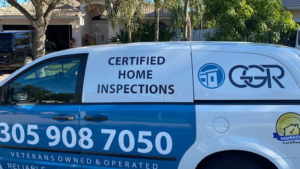The Difference Between a 4-Point and Wind Mitigation Inspection
Home inspections are an essential part of the home buying and insurance process. Several types of inspections can be conducted, but two of the most common are the 4-Point and Wind Mitigation Inspection. Insurance companies often require these two inspections.
4-Point Inspection Defined
A 4-Point Inspection focuses on four main areas of a property: the roof, plumbing system, electrical system, and HVAC (heating, ventilation, and air conditioning) system. This inspection aims to assess the condition and age of these critical systems and identify any potential hazards or risks. A 4-Point Inspection is typically required for homes aged 30 years or older or with previous insurance claims.
During a 4-Point Inspection, the inspector will examine these four areas’ age, condition, and functionality. The inspector will also look for potential hazards or risks that could lead to damage or injury. Insurance companies require a 4-Point Inspection to ensure that these critical systems are in good working condition and to assess any potential risks to the property.
Wind Mitigation Inspection Defined
A Wind Mitigation Inspection is a type of inspection that assesses a home’s ability to withstand high winds from hurricanes and other severe weather events. This type of inspection looks at a home’s various features, such as the roof covering, roof shape, roof deck attachment, roof-to-wall connections, and window and door openings. A Wind Mitigation Inspection aims to identify any features or upgrades that can improve the home’s resistance to wind damage and potentially reduce insurance premiums.
During a Wind Mitigation Inspection, the inspector will examine the home’s roof and other key features to identify potential hazards or risks. The inspector will also assess the home’s ability to withstand high winds and identify any potential upgrades to improve its resistance.
Differences Between 4-Point and Wind Mitigation Inspections
The main differences between 4-Point and Wind Mitigation Inspections are their focus areas and purposes. While a 4-Point Inspection assesses the condition and age of critical systems, a Wind Mitigation Inspection assesses a home’s ability to withstand high winds. Insurance companies may require both types of inspections, especially for older homes in areas prone to severe weather.
Benefits of 4-Point and Wind Mitigation Inspections
There are several benefits to both 4-Point and Wind Mitigation Inspections. For a 4-Point Inspection, the benefits include identifying potential hazards or risks that could lead to damage or injury, ensuring critical systems are in good working condition, and meeting insurance company requirements. For a Wind Mitigation Inspection, the benefits include identifying upgrades that can improve the home’s resistance to wind damage, potentially reducing insurance premiums, and ensuring the home is prepared for severe weather events.
Conclusion
In conclusion, it’s essential to understand the difference between a 4-Point Inspection and a Wind Mitigation Inspection. While both types of inspections assess a home’s overall condition, a 4-Point Inspection focuses on the age and condition of critical systems. In contrast, a Wind Mitigation Inspection assesses the home’s ability to withstand high winds. Insurance companies may require both types of inspections, especially for older homes in areas prone to severe weather. It’s essential to have these inspections done to ensure the home is in good working condition and to prepare for potential hazards or risks.





